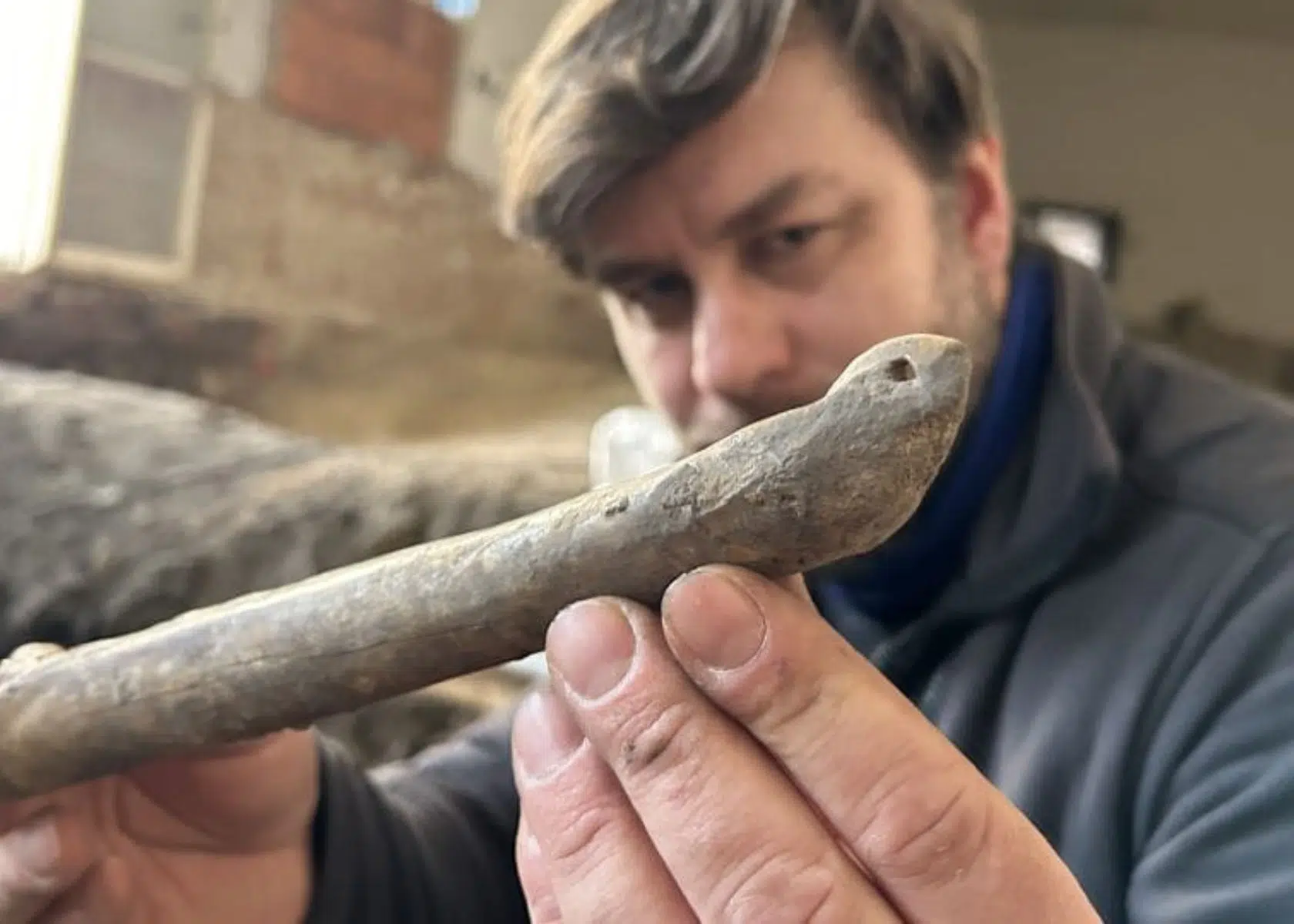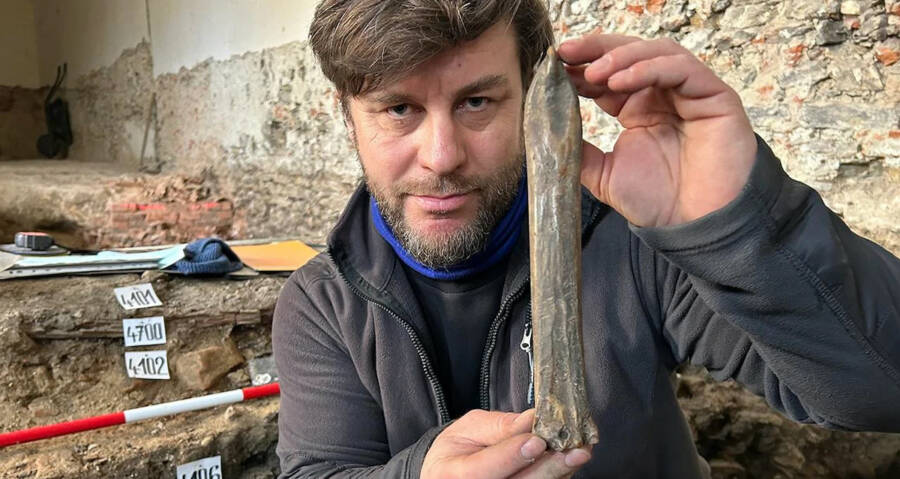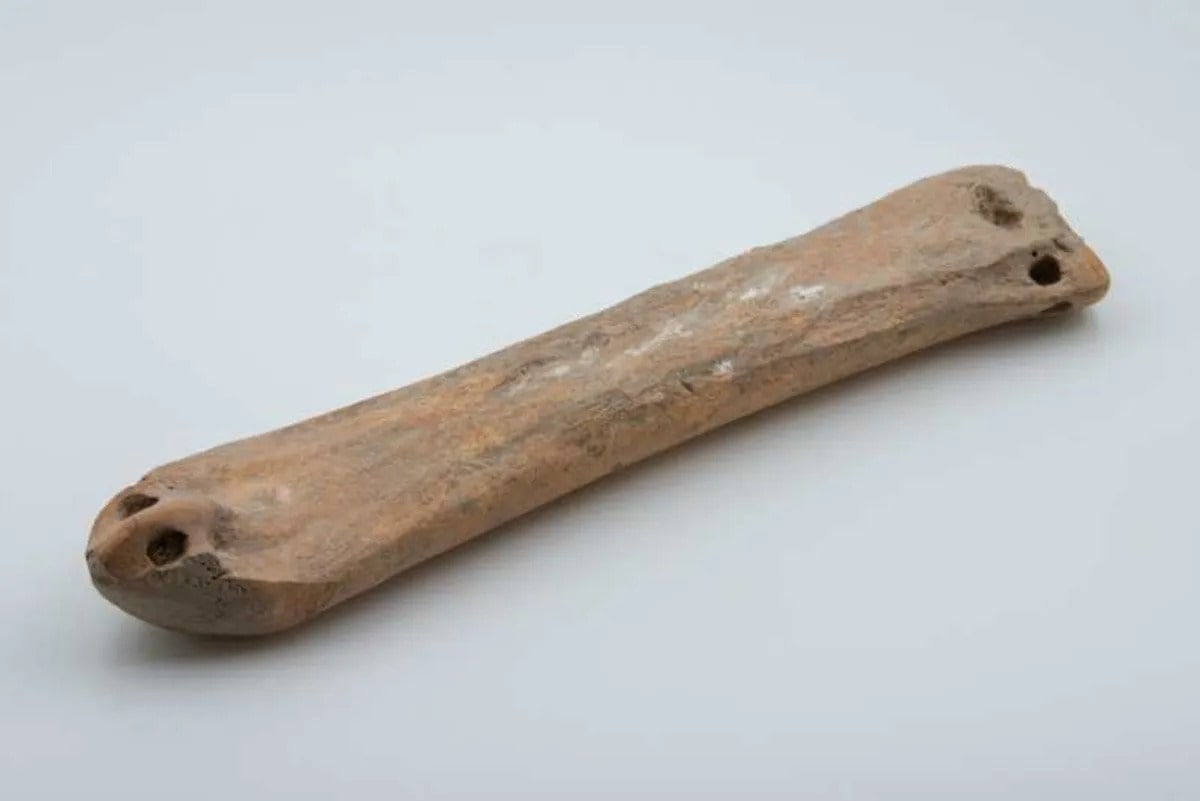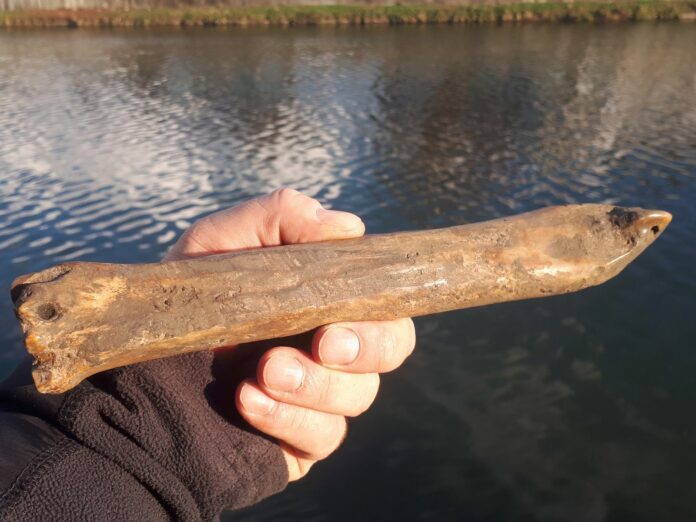In a remarkable archaeological find, researchers in the Czech Republic’s Olomouc Region have unearthed a 1,000-year-old ice skate made from animal bone. This discovery sheds light on a larger European tradition of crafting skates for traversing icy environments during the 10th and 11th centuries.
A Unique Find in Přerov

While excavating the basement of a home in Přerov, archaeologists from the Comenius Museum discovered an ancient ice skate fashioned from animal bone. This extraordinary artifact is believed to have been used to navigate icy paths or to help transport heavy loads on sleds during the harsh winter months.
The find occurred amidst a broader excavation project in Přerov, a historic town located on the River Bečva. Archaeologists have been conducting extensive digs in the Upper Square, an area known for its historical significance. During the 10th and 11th centuries, this part of Přerov was home to a formidable fortress.
“The Upper Square is located on a hill above the left bank of the River Bečva,” explained Zdeněk Schenk, an archaeologist on the project, to Radio Prague International. “But at that time, the whole early medieval agglomeration, with the exception of the fortified square, was actually made of several smaller settlements located along the branches and the meanders of the Bečva River.”
The first written mention of Přerov dates back to the 12th century, highlighting its administrative importance to the Bohemian royal dynasty. During the early medieval period, it served as a stronghold for Polish King Boleslav the Brave, who had his soldiers stationed in the area.
An Unexpected Find In A Basement

The excavation team discovered the bone skate while digging through a basement in the Upper Square. The long, curved item featured a specific shape, with holes drilled at both ends to thread a strap through, allowing it to be attached to a shoe or a wooden sledge.
“The object has a specific shape,” Schenk said. “On one side, it is curved into a tip which has a hole drilled in it and there is another hole at the back. They were used to thread a strap through, which was used to attach the skate to a shoe or to a wooden sledge.”
Researchers identified the bone as likely coming from a horse shin and suggested that it was not intended for recreational skating. Instead, users would shuffle along the frozen surface with the aid of a stick or two, or attach the blades to sledges to transport goods across frozen waters.
Dating The Discovery

The skate was found alongside several pottery fragments, which helped researchers date the artifact to between the second half of the 10th and the first half of the 11th century. This timeline aligns with the known European tradition of bone skate production.
“We know of other similar pieces found in Central Europe and especially in north-western Europe, in Scandinavia,” Schenk noted. “They mostly come from the same time frame as the one from Přerov and they are often found in 10th-century Viking settlements.”
In 2009, a similar bone skate was uncovered nearby, reinforcing the significance of this recent find. Researchers hope to continue unearthing such artifacts to deepen our understanding of medieval European culture.
Conclusion
The discovery of the 1,000-year-old animal bone skate in Přerov provides valuable insights into the daily lives and technological ingenuity of medieval Europeans. As archaeologists continue their work, further findings may reveal more about the rich history of this region and the broader European tradition of bone skate production.
